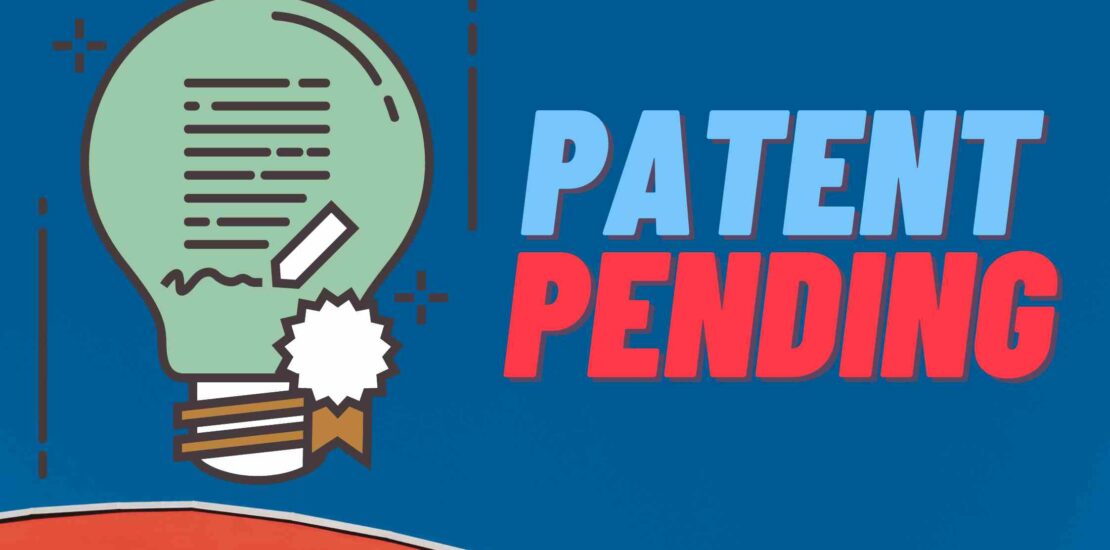What does Patent Pending mean?
- March 2, 2021
- Posted by: Patntech
- Categories: Blog, Patents


The legal designation, “patent pending” or “patent applied for” may be used for any kind of patentable process or product to indicate that a patent has been applied for but not yet issued. If a patent application has been lodged to cover an article and the application has not yet been granted/rejected/withdrawn/abandoned, the terms “patent applied for” or “patent pending” can be used.
This is quite an encouraging move for the applicant as it takes considerable time from the date of filing the patent application till the date of grant of the patent. In the meantime, the applicant often gets disappointed and becomes worried as it would take a long time to secure a patent. Once the patent application is filed, the associated product or process can be marked as “patent pending” or “patent applied for”. The marking serves to notify the public, business, or potential infringers who would copy the invention that they may be liable for damages (including back-dated royalties), seizure, and injunction once a patent is issued.
On the other hand, the term “patented” or “patent” is used with regard to a particular product when an article is sold in the market for which the patent is already granted covering the product. In the cases where there is unauthorized usage of the words, it could lead to a fine extendable to one lakh rupees.
According to Section 120 of the Indian Patents Act, 1970, it is illegal to use markings such as “Patent pending” or “patent applied for” where no patent has been applied for, and to falsely represent that any article sold by a person is patented in India or is the subject of a patent application in India.
The use of words “patent”, “patented”, “patent applied for” or “patent pending” or any other words that express or imply that a product is patented or that a patent is applied for will refer to a patent in force in India, or to a patent application pending in India, until and unless it is expressly denoted that the patent has been obtained or applied for in a foreign country.
Upon filing the patent application (be it provisional or complete application), an applicant is allowed to use the term “Patent Pending” or “patent applied for” on their product. The use of the status “Patent Pending” indicates that the invention is being pursued by the applicant and the public is made aware that the marked products are believed to be invented.
The advantages of having to attest the words “patent pending” or “patent applied for” is the protection seeking from that potential infringer. The applicant can issue a notice to the infringer(s) upon encountering the infringement. The patent law allows the applicant to impose the probable infringers with the liability of damages, seizures, and injunction once the patent is issued. The privilege extends to immediate commercial promotion of the invention with the least risk of having the invention copied or stolen. It is like an official notice to the competitors, which will be particularly useful in establishing a patent infringement once the claim of the invention is granted by way of a patent.
Likewise, for every advantage, a concept will have its disadvantages too. In this case, the difficulty may arise due to the possible loss of trade secrets. Once the product with a patent pending sign is out then the secrecy of maintaining it till the grant of patent is lost. There is less scope for improvement of the invention in the product or process. The confidentiality of the patent is lost over the course of usage. The “patent pending” status is just security as a creamy layer of the whole patent, but the real security of a patent is actionable only after that grant of a patent, this leads to a false sense of security. To summarise, the negatives include a substantial rise in the actual value of securing a patent, the potential loss of trade secrets, and a false sense of protection.
There are numerous consequences of making the patent application public. While it’s important to weigh the advantages against the risks, such as the likelihood that the notice will encourage a rival to design around your claimed innovation, notification will help a patent applicant gets the most out of a well-drafted patent application.
Author- Sneha V Kopparad
How to Apply for a US Design Patent: Your Step-by-Step Guide
A US design patent protects the unique ornamental design of an article of manufacture. It helps businesses and inventors safeguard their innovative creations. If you plan to apply for a US design patent, understand the application process and requirements.
July 10, 2025US Utility Patent Process: What Foreign Applicants Should Know
A US utility patent represents a significant accomplishment for companies and inventors worldwide. It’s more than just paperwork;
July 4, 2025Women in IP Global Networking Event 2025 | AIPLA
Mrs. Thriveni from PatnTech recently attended the Women in IP Global Networking Event 2025, organised by the American Intellectual Property Law Association (AIPLA).
June 9, 2025INTA 2025
Mr. Chandrasekhar Raju of PatnTech recently had the honour of attending the International Trademark Association (INTA) Annual Meeting 2025, held in San Diego, USA
May 17, 2025





[…] Check Out: What does Patent Pending mean? […]